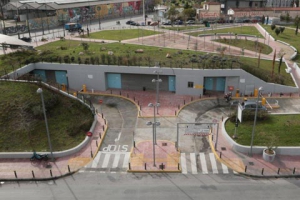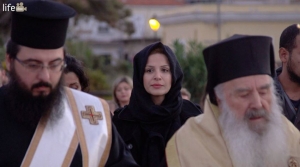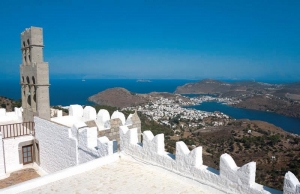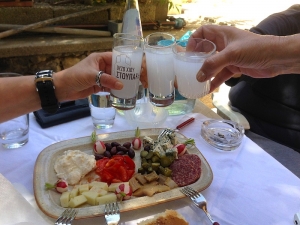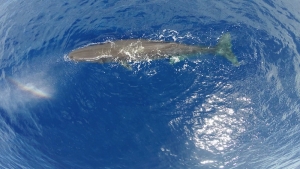BUSINESS CENTRE
XpatAthens
16 Million Euro Parking Garage Opens At Kerameikos
The plot on the corner of Pireos and Iera Odos streets lay unused for years until finally things got moving and the underground parking garage opened in early March. It has five stories, with each level measuring 2,500 square meters and with a capacity for 274 vehicles. It is open 24 hours a day (a wise decision considering it is located close to one of the capital’s busiest nightlife districts) and is reasonably priced: starting at 2 euros for metro passengers (who have to display their tickets) or 3 euros for everyone else from 6 to 9 p.m., and up to 5 euros from 9 a.m. to 6 p.m. The ground-level “roof” of the parking garage has been turned into a green space and ceded back to the City of Athens, which originally owned the plot.
The story of the parking lot is strange, aside from the fact that the facility has been ready for several years but didn’t open until now. To begin with, it was built simply as a way to hold on to European Union funding. According to the original plans in the 1980s, the plot was intended for the new Kerameikos metro station, which is now on the main square in the nearby Gazi district. Excavations began in 1992 and the metro tunnel was supposed to run 20 meters underground, well below the level that the majority of antiquities in central Athens were found at. But archaeologists had expressed serious reservations about the location because of its proximity to the Ancient Cemetery of Kerameikos.
As it turned out, they were right. After five years, the excavations hit the western end of the cemetery, prompting a scramble to find a new site for the station that took on such controversial proportions that it was taken as far as the European Parliament. In 1997, the Central Archaeological Council laid the matter to rest by prohibiting the construction of a tunnel beneath Kerameikos. In the meantime, however, Attiko Metro had started building the station’s shell, spending some 5.8 million euros on that phase of the project.
To read more please visit: eKathimerini
Linguistic Tourism - A New Way Of Travel?
Remembering The Souls Lost In The Aegean
As described by the photographer, Konstantinos Vougioukas:
'A mother stands as a statue. One can feel how historical such moments are when you see Christians and Muslims praying all together for the victims that drowned in the Aegean Sea... Because human life does not recognize religion.'
Originally posted in Greek on LIFO. Photo by Konstantinos Vougioukas.
In our research about the photographer Konstantinos Vougioukas, we came across these powerful videos and wanted to also share them with you. Simply incredible.
1) https://www.facebook.com/lifedocGreece/videos/946716745403452/?pnref=story
2) https://www.youtube.com/watch?v=fRIGEyOPYBc
To learn about how you can help in the refugee crisis, click HERE.
Traditional Greek Bulgur Salad - Pligourisalata
Ingredients:
- 1 cup dried bulgur (soaked in 1/2 cup water for 1 hour)
- 3 cups chopped parsley (just under a bunch)
- 2 cups chopped cilantro (approx 1/2 bunch)
- 1 cup chopped mint (1/3 of a bunch)
- 2 cups chopped cucumber
- 1 cup chopped tomato
- 1/2 cup chopped red onion
- 1 tsp salt/pepper
- 1/4 cup lemon juice
- 1/4 cup olive oil
Museum Of Cycladic Art In Athens
The Collection of the Museum of Cycladic Art, one of the largest worldwide, is a major attraction, as simple marble figurines depicting naked human figures fascinate the visitor with their simplicity and abstraction, elements that inspired artists of the 20th century, such as Brancusi, Modigliani, Giacometti, Hepworth και Moore.
Apart from archaeology, the temporary exhibitions of the MCA frequently focus on modern and contemporary art, aiming to introduce the public to important 20th century artists (Dali, Picasso, etc.) and explore the links between ancient cultures and modern artistic creation.
Interactive educational programs for schools, children and families, guided tours, temporary exhibitions –archaeological, modern and contemporary–, conferences and various events complete the museum’s cultural profile. The Cycladic Café and the recently renovated Museum Shop are open during visiting hours.
1st Floor - Cycladic Art
Cycladic culture flourished on the islands of the central Aegean during the Early Bronze Age (3rd millennium BC). The MCA collection is one of the most comprehensive collections of Cycladic antiquities worldwide, comprising an astonishing variety of marble figurines and vessels, bronze tools and weapons, as well as pottery from all phases of the Early Cycladic period.
2nd Floor - Ancient Greek Art: A History in Images
The birth of Greek art in the protohistoric Aegean, the development of Classical culture and its gradual dissemination all over the Mediterranean basin constitutes one of the most influential phenomena in the history of western civilization. The MCA holds a large collection of Ancient Greek Art with representative artifacts from all periods between the Middle Bronze Age (2nd millennium BC) to the very end of the Roman period (4th c. AD). The MCA collections of Ancient of Greek Art have been integrated into a single permanent exhibition, titled "Ancient Greek Art – A history in images", which includes approximately 350 objects.
3nd Floor: Cyprus- Aspects of Ancient Art and Culture
The Cypriot collection in the MCA (Th.N. Zintilis collection) is one of the most comprehensive collections of Cypriot antiquities in the world. It contains more than 800 objects that help visitors learn about the history of the island and its relations with other regions of the eastern Mediterranean from the 4th millennium BC to the Early Christian period (6th c. AD).
4th Floor: Daily Life in Antiquity
One hundred forty two objects - mostly dating to the Classical Hellenistic periods (5th-1st c. BC) - are grouped in nine separate units.
The 1st Patmos Revelation Opens Its Doors
How To Drink Like A Greek
(Consider also that as famously rich as the Greek language is, there is no specific word for hangover.)
- Whatever the drink, you never just start drinking. After everyone’s glass has been filled, there will be a general “ya-mas!” (“our health!”)to start things off. Thereafter, sip from your glass as you like.
- When glasses are refilled, it’s not uncommon to toast with the fresh drink. This happens a lot – glasses are generally small (perhaps this very purpose). You can fill your own glass, but fill the glasses of your neighbors first. (Who fills whose glass? Just as you wish, but it much follows the pattern of society in general – men often fill women’s glasses, and you fill the glass of your great aunt.)
- Whenever anyone new joins the party, all will toast afresh when their glass is filled for the first time.
- Nicest of all, from time to time someone will simply be seized with the impulse to toast. This is particularly the case at a large table – spontaneous toasts periodically reunite the group. People will sometimes even rise from their chairs to chime glasses with friends at a distance.
- Is there a happy event coming up? Look forward to even more toasting (“kala stefana!” = “happy wreaths!”= happy wedding).
- Do join in each toast – if all these sips are going to your head, just barely wet your lips, and drink lots of water in between.
Diver Finds Sperm Whale Washed Ashore On Santorini
The sperm whale is in a location that is not accessible, making it difficult for authorities to retrieve the mammal. However, the Port Authority of Thira is actively working with the Hellenic Center for Marine Research to solve the issue.
World Class Athletes & Accolades For The 6th Navarino Challenge
One of the biggest names in basketball and former ace of Real Madrid and Sacramento Kings, Joe Arlauckas will be in Costa Navarino for Navarino Challenge to remind us of the high level basketball he has played in his career but also to teach us his golf secrets as he has been deeply involved with this sport recently.
Euroleague basketball legend said for this participation: “Apart from the beauty and serenity that Costa Navarino offers, I am so pleased to join such a special event like the Navarino Challenge 2018. The location is perfect, and the idea is something that should be considered all over the world. The opportunity to bring families together through sporting activities is not just a special occasion, but at the same time it teaches children values such as dedication, sacrifice and teamwork through activity. I am so excited to join the team this year”.
The awards
Navarino Challenge is a world class event, which grows every year both in activities and in number of participations. The internationally acclaimed event enriches Greece’s sports tourism, extends the country’s tourist season and presents the beauties of Greece all over the world. For all these reasons, Navarino Challenge was awarded for one more year at the Sports Marketing Awards 2018, in the category “Sports Tourism” of the section “Sports Events / Branded Events”.
Navarino Challenge participants who will book their accommodation package at The Westin Resort Costa Navarino and choose to take part in at least one of the main activities (running, swimming, SUP) will also be able to enjoy the organization’s full program of activities free of charge.
The program for those staying at The Westin Resort Costa Navarino includes: Tae kwon do, climbing, cycling, pilates, basketball, golf, kick boxing, baby swimming, aqua aerobics, kids' athletics, beach volley, tennis cross training, crossfit, beach yoga, boxing, beachathlon and demonstration race with optimist boats.
Photo Credit: Unique running routes at Navarino Challenge 2018 (photo by Mike Tsolis)
How To Print And Pay Your 2021 Road Tax
This content was originally posted on Insurance-Greece.com
XpatAthens is grateful to Insurance-Greece for being a Silver Partner and supporting our efforts to connect and inform the international community in Greece.
Insurance-Greece is an online insurance advisory portal focused entirely on ex-pat insurance matters in Greece. They do not have call centers and never send automated email replies. An actual person deals with your insurance needs at all times. Whatever your insurance plan, an Insurance Advisor is there for personal advice! You will have an experienced insurance advisor assigned to you so you'll always have someone to talk to regarding your insurance needs.
Find out more here.


